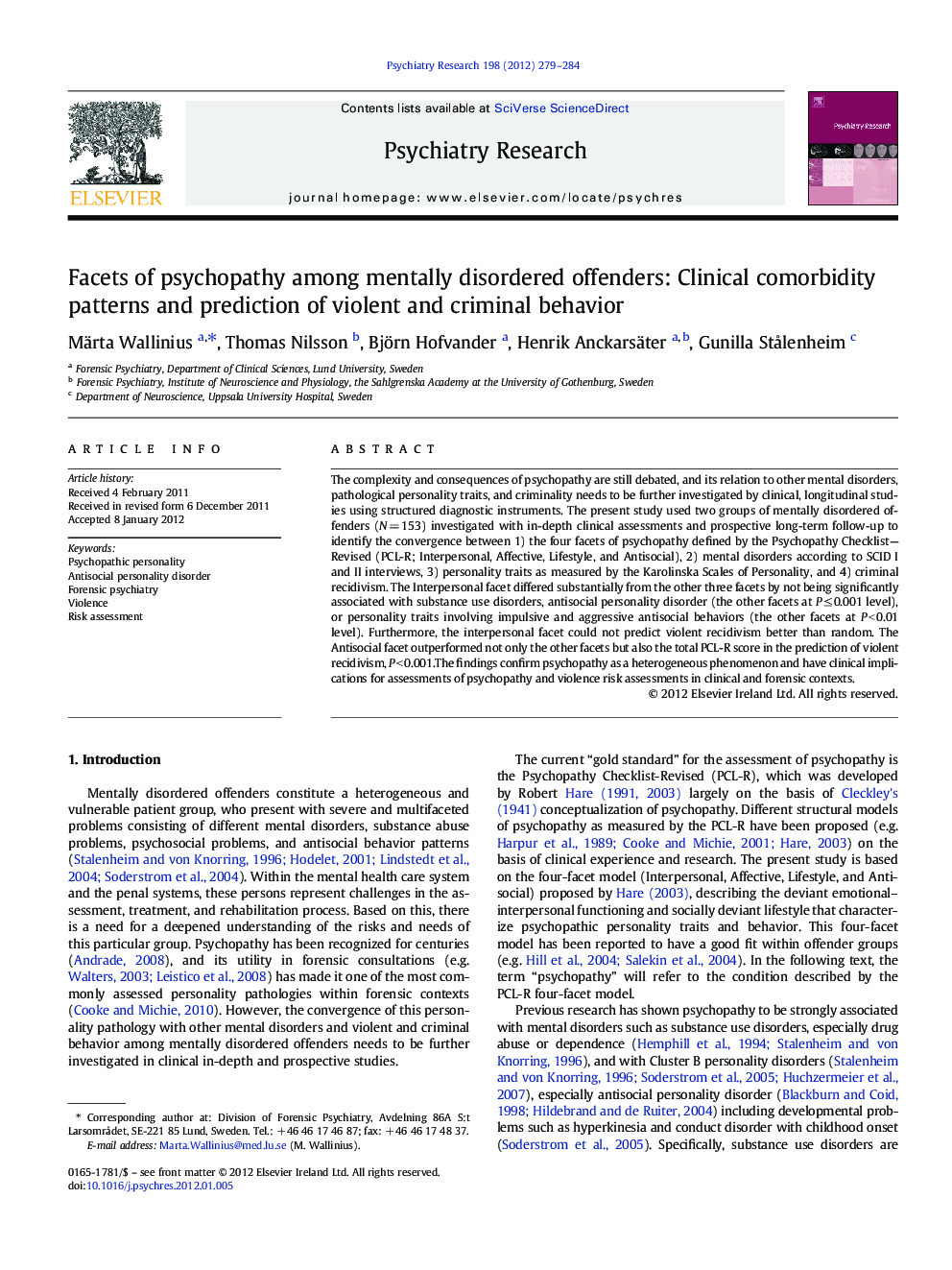| Article ID | Journal | Published Year | Pages | File Type |
|---|---|---|---|---|
| 333606 | Psychiatry Research | 2012 | 6 Pages |
The complexity and consequences of psychopathy are still debated, and its relation to other mental disorders, pathological personality traits, and criminality needs to be further investigated by clinical, longitudinal studies using structured diagnostic instruments. The present study used two groups of mentally disordered offenders (N = 153) investigated with in-depth clinical assessments and prospective long-term follow-up to identify the convergence between 1) the four facets of psychopathy defined by the Psychopathy Checklist—Revised (PCL-R; Interpersonal, Affective, Lifestyle, and Antisocial), 2) mental disorders according to SCID I and II interviews, 3) personality traits as measured by the Karolinska Scales of Personality, and 4) criminal recidivism. The Interpersonal facet differed substantially from the other three facets by not being significantly associated with substance use disorders, antisocial personality disorder (the other facets at P ≤ 0.001 level), or personality traits involving impulsive and aggressive antisocial behaviors (the other facets at P < 0.01 level). Furthermore, the interpersonal facet could not predict violent recidivism better than random. The Antisocial facet outperformed not only the other facets but also the total PCL-R score in the prediction of violent recidivism, P < 0.001.The findings confirm psychopathy as a heterogeneous phenomenon and have clinical implications for assessments of psychopathy and violence risk assessments in clinical and forensic contexts.
